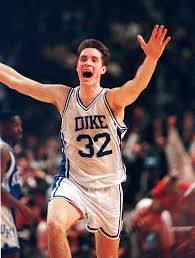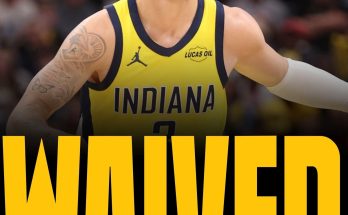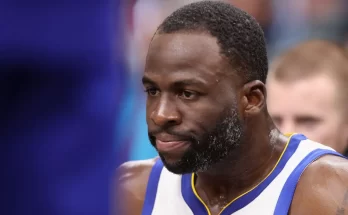March 28th, 1992. The date itself carries an almost mythical weight for college basketball fans. Thirty-two years ago, on this very day (or around it, as memories resurface each March), Christian Laettner etched his name into the annals of sports history with a single, unforgettable shot. It’s a moment that continues to defy time, a visceral experience for anyone who witnessed it, and a chilling testament to clutch performance that has been replayed countless times, maintaining its power to give fans goosebumps. This wasn’t just a game-winner; it was the game-winner, a defining snapshot of a legacy, a pivotal point in one of the greatest college basketball games ever played: the NCAA East Regional Final between the Duke Blue Devils and the Kentucky Wildcats.
The stage was Philadelphia’s Spectrum, and the stakes couldn’t have been higher. Duke, the reigning national champions, a polished, senior-laden squad led by the polarizing Laettner, was battling a gritty, resurgent Kentucky team under Rick Pitino, a group that had overcome probation to make an improbable Elite Eight run. The game was a back-and-forth epic, a slugfest of incredible shots, defensive intensity, and relentless effort from both sides. It was pure March Madness distilled into 45 minutes of basketball.
As the clock wound down in overtime, the tension was unbearable. With 7.8 seconds remaining, Kentucky’s Sean Woods, a gutsy senior guard, drove into the lane and hit an incredibly difficult, high-arching floater over the outstretched arms of Laettner. The ball kissed off the glass and dropped through the net, giving Kentucky a seemingly improbable 103-102 lead. The Wildcats’ bench erupted, the Philadelphia crowd, largely in favor of the underdog Kentucky, roared its approval. It felt like the perfect storybook ending for a team that had defied expectations.
But Duke had 2.1 seconds and a timeout remaining. Coach Mike Krzyzewski, calm amidst the chaos, drew up a play. Everyone in the arena, and watching on television, knew where the ball was going. It had to go to Christian Laettner, the ultimate competitor, the player everyone loved to hate, but whose clutch gene was undeniable.
Grant Hill, Duke’s athletic and composed sophomore, was tasked with the inbounds pass. From under Duke’s basket, a full 79 feet down the court, Hill launched a perfect, soaring pass. It was a throw that, in its own right, deserves immense credit for its precision and execution under unimaginable pressure. The ball sailed over Kentucky defenders, over the outstretched arms of John Pelphrey and Deron Feldhaus, who were trying desperately to deny Laettner the ball without fouling.
Laettner, positioned just inside the opposite foul line, caught the pass cleanly. His back was to the basket, Feldhaus draped all over him. In a fluid, almost instantaneous motion that has been replayed thousands of times, Laettner took one quick dribble to his right, pivoted sharply to his left, and released a turnaround jumper over Feldhaus’s contesting arms. The ball left his fingertips just as the buzzer sounded, slicing through the net with a clean swish.
Silence, then pandemonium. The scoreboard read Duke 104, Kentucky 103.
Verne Lundquist’s iconic call on CBS – “There’s the pass to Laettner, puts it up… YES! …Duke wins it! Duke wins it!” – perfectly captured the raw emotion of the moment. On the Kentucky radio broadcast, legendary announcer Cawood Ledford, calling his final game, could only offer a stunned, poignant “Oh, my goodness!” as his career ended in heartbreak.
What made Laettner’s shot so iconic, beyond the sheer improbability of the play and the dramatic timing, was the statistical perfection that accompanied it. In that game, Christian Laettner was flawless. He finished with 31 points, making all 10 of his field goal attempts, including that fateful game-winner and a three-pointer earlier in the game. He also made all 10 of his free-throw attempts. A perfect 10-for-10 from the field and 10-for-10 from the free-throw line in an NCAA Elite Eight overtime thriller. It’s a level of individual performance under pressure that remains unparalleled in college basketball history.
The shot also cemented Laettner’s legacy as one of the most polarizing figures in sports. He was supremely talented, undeniably clutch, and intensely competitive, but his sometimes arrogant demeanor and willingness to engage in physical play (including a now infamous stomp on Kentucky’s Aminu Timberlake earlier in that very game, for which he only received a technical foul) made him a villain to many, especially outside of Duke’s fervent fanbase. Yet, even his detractors cannot deny the indelible mark he left on the game with that single, perfect shot.
Thirty-two years later, the “Laettner Shot” continues to be a benchmark for March Madness heroics. It’s a staple of highlight reels, the subject of countless retrospectives, and a source of perpetual debate and discussion. For Duke fans, it’s a moment of unadulterated ecstasy, a symbol of their dynasty’s grit and clutch pedigree. For Kentucky fans, it’s the agonizing sting of what might have been, a perpetually raw wound in their proud basketball history. And for casual fans, it’s simply a reminder of the unparalleled drama and unpredictability that makes college basketball’s postseason so captivating.
The passage of time has done nothing to diminish its impact. If anything, it has only solidified its place as one of the most thrilling and significant moments in sports. It’s the shot that transcended a game, a tournament, and even a player, becoming a cultural touchstone that continues to give fans chills, forever defining a legacy.



